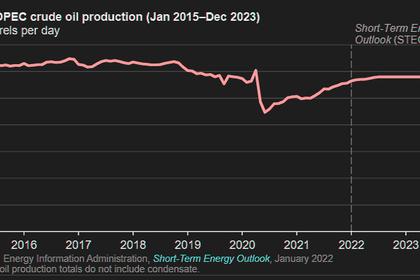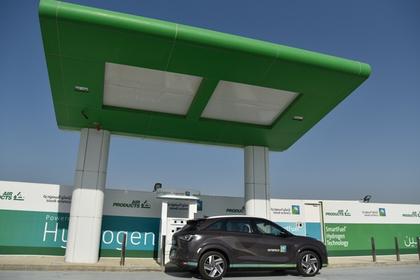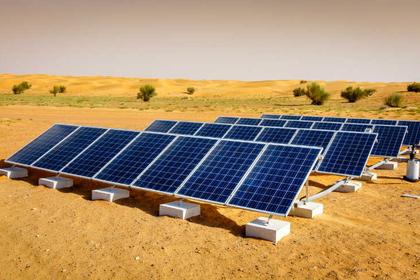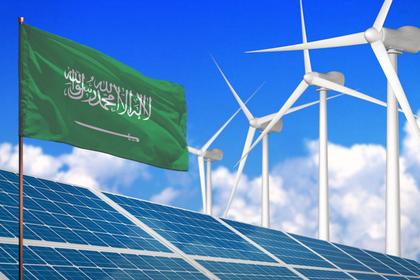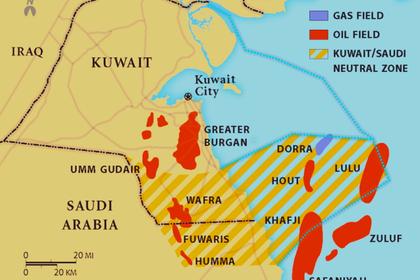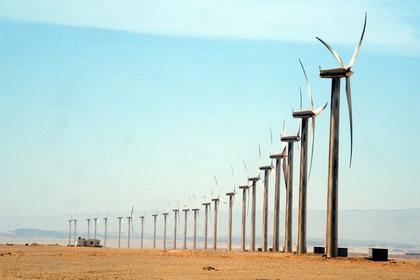
SAUDI ARABIA'S PRODUCTION CAPACITY 13.5 MBD
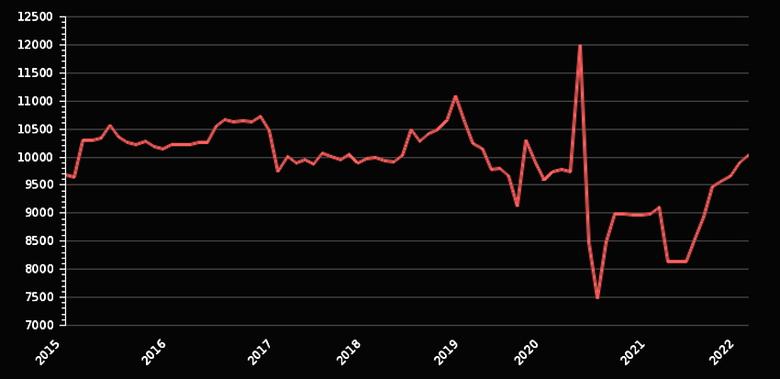
TIME - FEBRUARY 6, 2022 - From his spacious offices in Riyadh, Saudi Arabia’s energy minister Prince Abdulaziz Bin Salman believes he has a bird’s eye view on the global energy transition—a momentous shift on which the kingdom’s climate policies could have a major impact, for good or bad. As the world’s biggest oil exporter, Saudi Arabia produces more than 9 million barrels a day, and has 15% of the entire world’s oil reserves.
That massive output is unlikely to slow, even though the titular leader, Crown Prince Mohammed Bin Salman, or MBS, claims to want his country to go green, and zero out its carbon emissions by 2060. In fact, over tea in Riyadh, Abdulaziz told TIME’s Vivienne Walt that the state-owned oil giant Saudi Aramco will begin pumping far more oil, increasing its grip on global supplies, as Western countries and international energy companies try to curb fossil fuels.
It’s a canny calculation, and Abdulaziz, in his 60s, has the clout to see it through. He was appointed in 2019 by his hugely powerful (and much younger) half-brother, MBS. And at 36, MBS could rule for decades, if he prevails in the bitter palace battle to succeed his ailing father, King Salman, 86.
Abdulaziz insists Saudi Arabia can roll out multibillion-dollar solar, wind, and hydrogen projects at home, even while remaining a giant oil producer. Choosing between the two is absurd, he says, and those who predict the inevitable decline of fossil fuel use are “living in a fantasy land.”
The planet’s health could rest on which side is proved correct.
(This interview has been condensed and edited for clarity.)
Saudi Arabia is investing billions in green energy, and it has declared a net-zero target of 2060. That seems a real contradiction for a big oil power.
We have been working on what we call the “circular carbon economy,” about how to achieve net zero. We want to reduce our emissions by a good number. We can become more efficient, by installing insulation for buildings, by having more efficient standards for industry, and so on. And we can take the CO2 that was committed to the atmosphere and use it in a valuable application, say for a food or beverage company, as a valuable product, so it becomes a material, instead of discarding it. Sequestering it is good. Using it is even better. Otherwise you would have to dump it somewhere.
We like the transition. If I can sell you the oil or gas that we have, and the carbon emissions will be handled, why should you confine yourself to a choice or two? You should keep your choices open, so that you mitigate the concerning issue, which is carbon emissions.
Your critics point out that your net-zero plan relies heavily on carbon capture and sequestration, or CCS, which is an uncertain technology.
Equally, other choices talked about are not developed yet. They still have huge uncertainties.
You’re producing about 10 million barrels of oil a day. Do you see that level of production continuing, even through the global energy transition?
We believe oil consumption will continue to grow. The demand for oil will continue growing. At what level, I do not know, because the jury is out. Anyone who tells you that they have a good grasp of where and when and how much is certainly living in a fantasy land. We are human, and we could prove to be wrong, but that is exactly what we believe.
That is why we have now come to the decision to go to 13 [million barrels a day]. That decision was actually made in March 2020, when we had negative prices. [Ed. note: World oil market prices fell below zero in April 2020, as worldwide pandemic lockdowns collapsed demand.] A week before that negative price, on behalf of the government in this ministry, we sent a letter to Aramco saying, ‘Go for 13.’
Any normal person would say, ‘How on Earth can you decide this?’ And I would tell it simply: You know, with these low oil prices, production will be curtailed. Investment will be curtailed. And by us advancing our program of expansion, we stand a better chance of capturing that market.
We are targeting our production capacity to become 13.4, 13.5 million barrels a day by 2027.
Last year, when the International Energy Agency [the multigovernmental IEA, based in Paris] called for a halt to oil and gas investments, and said fossil fuels would steadily decline, you called it the sequel to the movie La La Land.
It was a good movie, a fun movie. But it’s something you watch for two hours and move on. You go back to reality. That scenario requires that we get into the modus operandi of being in a movie for the rest of our lives. It does not give you the certainty of how you are going to serve the generations to come.
So do you believe the world will keep using more and more fossil fuels?
We see the numbers. They are not our numbers. They are the United Nations’ numbers. Three billion people lack any meaningful energy source, any clean energy, just for cooking. These people use biomass, everything, to burn, including cutting trees. Just to get through the day, they expose themselves to all sorts of hazards, including sickness and even death. For $500 million you would be able to give energy to 750 million people, in order to cook using clean energy, using propane energy, giving them a stove. [Ed. note: TIME was unable to replicate the calculation to support this claim.]
How can you go to these countries and start talking about climate change, emissions reductions, sustainability, diversification, when their basic needs are not there? We have not yet talked about education, housing, health care, transportation.
While I see the point for the developed world to see this as a serious priority, that doesn’t take into account those who are way down the ladder. You need to bring them up that level to be able to see.
The 2060 goal that the Crown Prince announced last October, before the COP26 talks in Glasgow, is only for your internal consumption. It doesn’t touch exports, which is most of your production.
We are not in control of how others will be mitigating their consumption. The question is, who is going to use that oil, and for what purpose? What can the person using that gasoline or diesel use it for, and with what kind of technology? This goes beyond the jurisdiction of a product.
With the evolution of technologies like carbon sequestration, it would allow us to achieve net zero before 2060. However, if the alternative happens, which is the closure of markets to oil, and if there is no progress in technologies, then our emissions would increase, and then net zero would take us even longer than 2060.
Correction, 2/7:
The original version of this story mischaracterized a metric cited by Prince Abdulaziz Bin Salman. He claimed that $500 million worth of oil could provide energy to 750 million people, not 500 million barrels of oil.
-----
Earlier:
